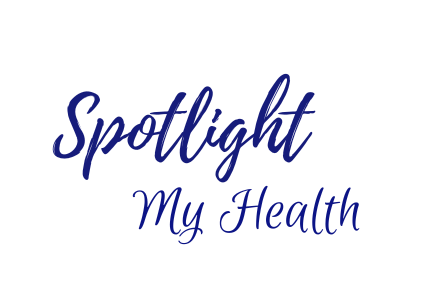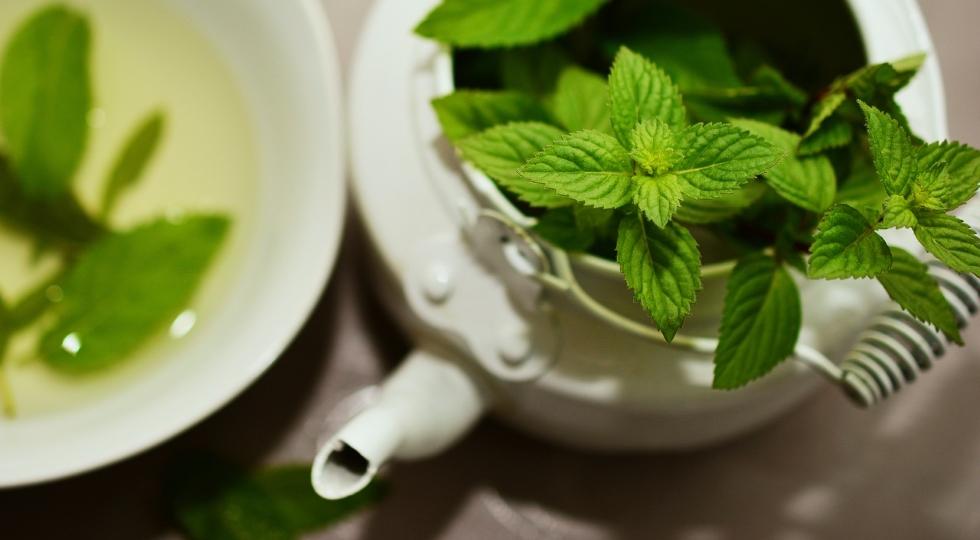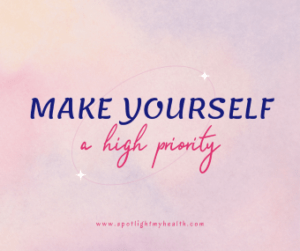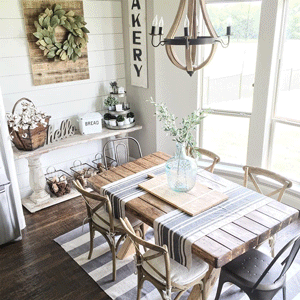“Spotlight My Health participants in the Amazon Services LLC Associates Program, an affiliate advertising program designed to provide a means for this site to earn fees by linking to Amazon.com and affiliated sites”.
Time for Something Different
Looking for something different in the way of a facial wash and body wash that does the trick but doesn’t break the bank? Give these recipes a try. They are easy, diy face and body washes using essential oils that you can make on your own. These recipes use simple, natural ingredients that create non-toxic, gentle effective cleansers and only take minutes to make.
My skin is getting older (no secret, huh), so I’ve begun looking around at what is on the market for skin care. OMG! I can’t believe the prices.
And I’m sorry, but I don’t want to spend the kind of money that many of these OTC products would cost me only to find out they don’t do much for my skin.
Since I like using essential oils, I decided to start doing research on what I could come up with on my own using the essential oils that I like.
The recipes I’ve come up with would only take minutes to make and feel good on your skin, not to mention, the smell is devine!
One really good reason to make your own washes is that you can make a different recipe for whatever type of skin you have and what kind of reaction you want for your skin. For instance, do you want reinvigorated skin first thing in the morning? Use mints in the recipe. Have sensitive skin? Use chamomile in your facial wash.
Hubby want his own body wash? Great! Surprise him with a batch of body wash for him that has cedarwood in it—he’ll love it! My hubby prefers vanilla.

This article will give you the following information:
-Basic Recipe for Facial Wash
-Basic Recipe for Body Wash
-Manly Body Wash Recipe
-Ingredients and Tools Needed
-Explanation of the ingredients
-Prep Time
-How to Store
-Shelf Life
-How often the wash can be used
My Criteria for A Natural, Homemade Facial Cleanser and Body Wash
I can’t say that I have really sensitive skin, but I have noticed that the older I get the easier I need to be on my facial skin. So that was a priority when I began looking for a face cleanser that I could make and use.
I came across two blog sites that offered basic recipes I like and am sharing with you. Those are A Blossoming Life and Country Hill Cottage.
The criteria I was looking for in a recipe is easy for a beginner, quick, customizable and gentle. I didn’t want to have to research every time I want a little change or choice in my cleansers. These recipes and variations seemed to fit the bill.
DIY Facial Cleanser Basic Recipe (without Lactic Acid) and Tools
1/3 c castile soap
1c distilled water, boiled down to ½ c
2T dried lavender (optional)
1T oil
1T honey
15 drops of chosen essential oil
Saucepan
Medium to Large mixing cup or bowl with spout
Funnel
Storage container (with pump, optional) such as these suggestions from Amazon
NOTE: Please continue reading the complete post before making this recipe to find out why specific ingredients are used, how they are used and what the ingredient are for.
Prep Time and Instructions
This recipe will take less than ten minutes to make.
-Add the 1 cup of water and dried lavender (or other chosen herbs) to a small saucepan. Simmer these ingredients until reduced by half-about 5-10 minutes, then set aside.
-While the water is simmering, put the oil, castile soap and honey in a small container that has a lid.
-When water and dried lavender are ready, strain the lavender out of the water and add the strained water to the other ingredients.
-Add your desired essential oils and shake all the ingredients together.
-Separation is typical, so be sure to shake before every use.
Storage
I really, really prefer glass containers (like these ideas on Amazon) to put the face wash in to look nice on my sink.
Shelf Life and How Often Facial Wash Can Be Used
This facial wash should last you three to four months, depending on how much you make. It’s gentle enough to be used daily.
Basic Facial Wash Ingredients
Castile Soap: this soap is an all-natural, veggie-derived soap that is very concentrated. Using this cleanser is fine, but a personal choice. However, there is a caveat to using castile soap.
Castile soap has a high pH balance registering between 9-11. For our human skin we don’t want a cleaner to have a pH balance of more than 4.5 or 5. More is too harsh. So, the pH of castile soap is too strong for most of us.
Also, the recipe(s) that I’m giving you use lactic acid which doesn’t work well with the castile soap.
The two ingredients cancel each other out chemically, because the acid in the lactic acid breaks down the soap molecules in the castile soap.
I prefer a pH balanced shower gel to use on my skin. But, I wanted to make you aware of castile soap as a cleanser. Many use this soap and it is fine for them.

Ingredients continued…
Dried lavender (optional): You will get more benefit for your skin when using herb infused water such as lavender, rose petals or chamomile flowers (all easy and gentle on your skin and are known as Hydrosols)
Carrier Oils: Plant based oils–sweet almond oil, jojoba avocado or fractionated coconut oil are good ones to try out.
Honey: is a natural antibacterial and is good for keeping your skin hydrated. Side Note: Manuka honey is very good on burns if you ever need it. I’ve had second-degree burns and used this honey on them. The honey not only healed my burns, but I also don’t have a scar.
Essential oils (optional): There are many options of different EO’s you can use. Some are better for our skin than others. Start out trying oils like lavender, ylang ylang and frankincense.
Basically, used to add scent to these DIY washes, however, they also add other skin care benefits which I will explain later. A lot of these oils can affect the thickness, color and clarity of your facial cleanser or shower gel.
Distilled water or hydrosols: Distilled water helps to keep bacteria at bay. If you don’t have distilled water handy, here’s a little trick for you. Fill a pan with tap water and bring it to a bubbly, rolling boil.
Turn the stove off and let the water cool down to room temperature. Use this water to make your facial cleanser and bath gel.
What are Hydrosols?
Hydrosols: also known as “flower waters,” because they are made by distilling fresh leaves, fruits, flowers, and other plant materials. Hydrosols have similar properties to essential oils but are much less concentrated. Hydrosol scents are usually soft and subtle when compared to their essential oil counterpart. They will give your cleanser a nice, natural scent.
When making your cleanser whether facial or body, you don’t need to use both the distilled water with essential oils or hydrosol but can choose either or.
You can also purchase some hydrosols already made, if you prefer.

BODY WASH
Basic Homemade Body Wash Recipe with Lactic Acid
Note: This shower gel has a thick texture, foamy lather, with shimmer, that I like and leaves my skin feeling clean and soft.
¾ c Distilled water or hydrosol
½ c Coco glucose (cleansing agent)
1T Vegetable Glycerin (optional)
½ t Preservative
¼ t Aloe Vera
½ t Vitamin E
½ t Panthenol (Vit B5)
1-3T Plant-derived Oil
50 drops Lactic Acid
Up to 40 drops of preferred essential oil (optional)
Colorant (optional)
Prep Time and Instructions
-Mix water and surfactant (cleanser) into a large measuring cup or bowl with a spout.
-Gently stir with a spoon. Do not use a mixer or blender because you don’t want to whip air into the product. Plus, you create foam and bubbles.
-Add your optional ingredients, such as glycerin, colorants and essential oils while continuing to stir the mixture. Note: some of the colorants could take a minute or two to completely dissolve.
-Add the preservative
-Add the lactic acid and stir the mixture for 2-3 minutes until the gel thickens. Continue adding 1 drop of lactic acid until you have your desired thickness. The lactic acid will also adjust the pH in the mixture.
-Using a funnel, pour your body wash into your chosen container.
Storage
Because body wash goes in the shower/tub, I don’t recommend using glass containers.
The possibility of being dropped and breaking is too high, so I go for plastic with a pump. Plus, they are refillable, which I also like. You can also use squeeze bottles, soft tubes, basically any type of container that suits you and your décor.
Choose what you like as long as the body wash is tightly closed and away from direct sunlight for good storage.
Then I get a nice waterproof label, like these, at Amazon to put on the container. I had no idea Amazon had labels like these. Check them out—You’ll love them!
Shelf life and Usage:
This shower body wash can last at least four months when in a decent container and stored properly. And because of the pH balance, can be used daily as you would most other shower gels.
Ingredients and Tools:
Coco Glucose (cleansing agent): Coco Glucose is a cleansing agent that is non-GMO, sulphate free and derived from coconut oil. It is usually sold as Plantapon SF.
This is specific—make sure you don’t get coco glucoside which is very different from the surfactant you want to use.
Lactic acid: acts a thickener, but more important adjusts the pH level of the wash so that you can use it on your skin.
Preservative: essential to keep away yeast, bacteria and mold. Give Preservative Eco (Geogard ECT) a try. It’s a broad-spectrum preservative.
Colorant: I prefer having a thick, colored gel, so I use colorants. You can use either soap colorants or food colors to tint the wash; however, they may take a while to completely dissolve.
Mica powder: This is what gives shower gels the shimmer tint that I like; this ingredient is optional as it really isn’t needed. Use up to 1/2 teaspoon.
Distilled water or hydrosols (see ingredients under Facial Wash)
Glycerin: softens skin, helps make the body wash more gentle and helps your skin retain moisture. Add up to 1T to your shower gel.
Aloe Vera: Has anti-inflammatory and analgesic qualities. 1/4t is plenty.
Vitamin E: My skin loves Vit E; it is good for your skin because it promotes cell regeneration and is also an antioxidant. 1/2 t for the body wash will do nicely.
Panthenol (vit B5): Soothing to your skin, B5, restores the elasticity and is a good moisturizer, as well as, good for sensitive and/or irritated skin. 1/2 t.
Plant Oils: Plant based oils–sweet almond oil, jojoba avocado or fractionated coconut oil are good ones to try out. Don’t go overboard with these oils–1 to 3T is enough.
Thickening:
As I said earlier, I like my body wash to have some shimmer to it, and I also like it thick and creamy so here are some ideas on how to make your batch of body wash more thickerer.
Thickeners are used to help create a luxurious, lathery feel to the body wash rather than ending up with a watery mixture.
Lactic Acid: 40-50 drops of this ingredients will give you a gloriously thick gel. Use more or less to match you preference for thickness of the end product.
Natural polymers (botanical gums and starches): Look for xanthan gum, guar gum, glucomannan, sclerotium gum among others.
Milk Powder: Another thickener that really adds to the ingredients to make your mixture a very rich and creamy body wash.
Additional Notes:
–Spoon: Always combine ingredients slowly with a spoon only. No whisk, blender or mixer that will create air in your cleansers.
–Prefer a clear cleanser? Skip the plant and essential oils and your end shower gel will be opaque.
–Lactic Acid: Can be used as a thickener if you don’t want the cloudiness that can be caused by the botanical gums.
–Bubbles: You may see lots of bubbles when you are finished making your cleansers. Don’t worry. The bubbles usually appear when pouring the mixture into its final storage container and will disappear over night and you’ll have a clear product.
Variations
Kickstart DIY Mint Shower Gel
½ c peppermint hydrosol
½ c coco glucose
1T vegetable glycerin (optional)
½ t preservative
50 drops of lactic acid
10 drops of steam-distilled lime essential oil
Up to 15 drops of peppermint essential oil
Green colorant
Yields: About 10 ozs.
This body wash has a crisp scent that is the perfect way to start your day with reinvigorated skin and a revived, awakened mind.
Men’s Body Wash
¾ c distilled water
½ coco glucose
1T vegetable glycerin (optional)
½ t preservative
50 drops of lactic acid
22 drops cedarwood or other preferred manly essential oil
15 drops of lemongrass essential oil
Colorant (optional)
Lemon Shower Gel Ingredients
½ c coco glucose (plantapon SF)
¾ c lemon verbena hydrosol
½ t preservative
1 T vegetable glycerin (optional)
50 drops of lactic acid
Yellow colorant (optional): Add drops until desired color occurs
Other Suggestions
I would recommend making the basic recipes for the face and body wash just as it is the first time around. Then after using it for a few weeks, you’ll be able to tell what adjustments you might want to make to the basic recipes to give you more options
-All skin types: lemon and sandalwood
-Dry or aging skin: try myrrh, helichrysum or lavender.
-Need to be energized and refreshed: Lavender, lemon, and grapefruit.
-Troubled skin like psoriasis or eczema? Try frankincense, lavender helichrysum, sandalwood, chamomile, rose, or jasmine.
-Want to avoid stretch marks: Use helichrysum, lavender, patchouli, neroli, rose, and/or geranium in your recipes.
-Sensitive skin: give rose a try. It’s great for fine lines, crow feet, and wrinkles.
-Frankincense is great for anti-aging, skin imperfections, and wrinkles.
Benefits of Homemade Skincare
Have you ever thought about making your own skincare products?
-It’s much easier than you think
-You might enjoy it
-There is a good chance your homemade products will be easier on your wallet. What’s not to like, especially when you also get the added bonus of having nice, moisturized skin.
-You know exactly what is in the product and what you are using on your skin.
-Versatility: You can mix and match different ingredients for different variations on the basic recipe.
-Can double or triple the recipe to have enough for the whole family to use
Final Thoughts
Have you ever attempted to make your own creams, cleansers or body washes? I’ve been making my own night face cream for a couple of years now. I like it so much that I thought I’d try my hand at face cleanser and body wash.
What I’ve presented to you is what I’m trying, so I’ll let you know how it goes.
I also provided plenty of links to the different products used to make these products. I found them all online, mostly at Amazon. And Amazon is my go to place for shopping so that works for me. How about you?
If you’ve been thinking of making your own face cleanser or body wash, give these recipes a try and let me know what you think. I’d love to hear from you!
Stay Awesome!
Cher
Relevant Reading:
What Are Carrier Oils?
Basics of Essential Oils
Make Your Home Safer by Cleaning With Essential Oils
Always consult your doctor before using essential oils on children under five or while pregnant or breastfeeding. All content on this website is for educational and informational purposes only. It does not replace advice or directives from your doctor or attorney.
I am not a doctor and the FDA has not evaluated this post, products and recipes. This post is not intended to diagnose, treat, cure, or prevent any disease. This post is not to be considered as a recommendation or an endorsement or advice of any medical or health treatment.
















